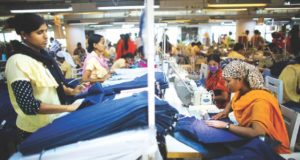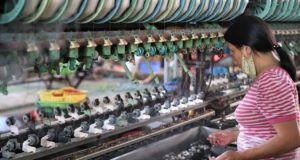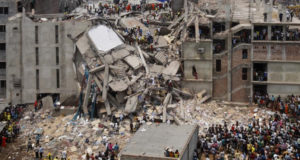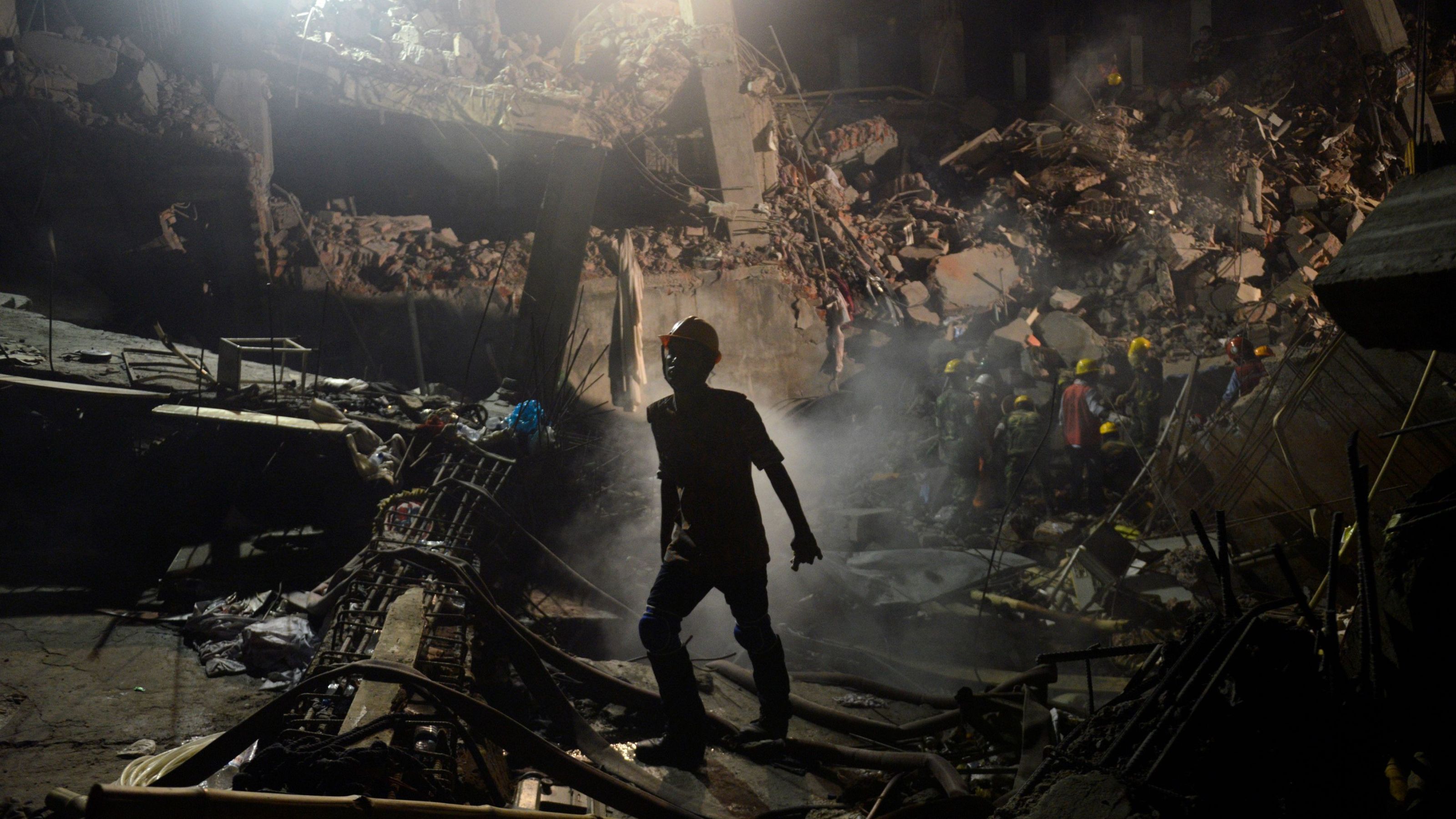By Mostafiz Uddin
Published in Dhaka Tribune on January 13, 2018
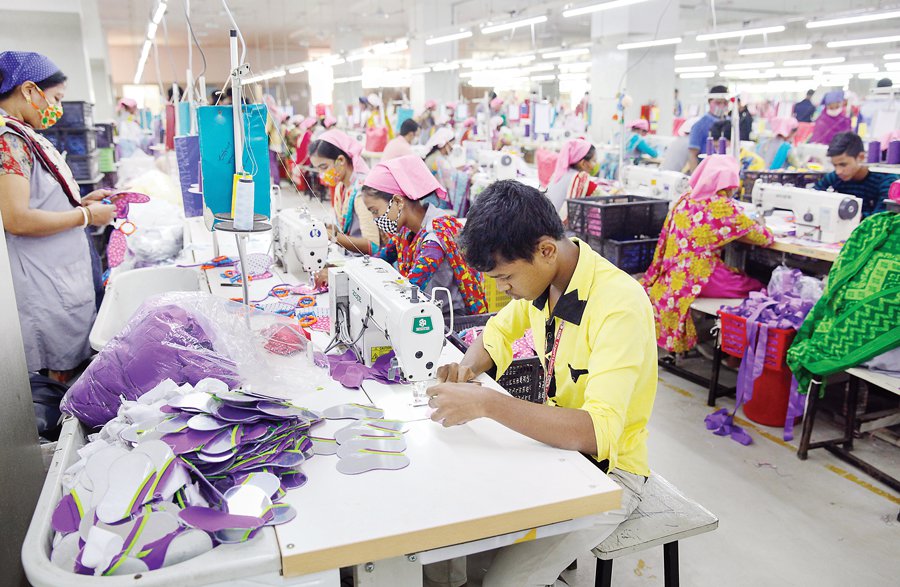
Photo: Mehedi Hasan/ Dhaka Tribune
Bangladeshi apparel industry’s remarkable progress in transparency is impressing foreign buyers
H&M in its new high-end product Arket introduced “transparent tagging,” where they mention the supplying factory names as well as some other key details of manufacturing.
This move by one of the largest fashion brands in the world is actually a reflection of a larger trend in the global fashion towards transparency, unlike any time in the past. New brands like Honest By – which launched in 2012 — are also able to break into the market by embracing transparency and taking advantage of this trend.
Transparency means letting consumers know who make their apparel – from who farmed the cotton, who stitched them, right down to who dyed the fabric, and so on.
The demand for transparency in the textile and garment supply chains is growing as consumers are becoming more socially and environmentally conscious every day.
In fact, after sustainability, transparency is probably the most talked about topic in the fashion world at present and will be so in the years to come.
A wake-up call
We all know the history of our ready-made garments (RMG) industry. After a journey of about 35 years, Bangladesh has become the second largest apparel exporting country in the world, after China.
Our journey so far has not been easy. In the early days, industrialisation happened in a largely unplanned manner. As we kept growing, we started adopting positive changes, particularly in the areas of compliance and well-being of workers.
In fact, Bangladesh was among the first few RMG-exporting countries to eliminate child labour from the industry in 1995, through the “Earn & Learn” program, with support from the United States, International Labour Organisation (ILO), and UNICEF.
In theory, the Constitution of Bangladesh also protects workers from all forms of exploitation. Bangladesh ratified 34 conventions of ILO including seven fundamental conventions in 1972, just after the year of our independence, whereas many developed and developing countries have not ratified them yet.
And then, in 2013, the Rana Plaza tragedy happened — arguably the most unfortunate episode in our RMG industry’s history. But the silver lining is that it was a wake-up call that forced us to overhaul our readymade garment (RMG) industry and enforce workers’ rights and safety.
It set off a massive transformation of the industry over the last four and a half years, resulting in significant improvements in work-place safety and factory compliance.
Rising to the occasion
Buyers-led safety initiatives such as Accord and Alliance together with our own national initiative have completed inspection of around 3,900 factories. More than 80% of the remediation work has already been completed.
This has been done in a most transparent way through a multi-stakeholders approach. Even the inspection reports with status updates are regularly published and accessible to the public through the website of the Department of Inspection of Factories and Establishment (DIFE) and the websites of Accord and Alliance.
Anybody from anywhere in the world can check the status.
There are more than 170 countries in the world producing apparel and Bangladesh has only a 6% share in the world market. But such level of transparency in terms of workplace safety does not exist anywhere in the world except in Bangladesh.
Over the past few years the government has taken a number of steps including amendment of Labour Laws, passing new labour legislation, mandating the formation of safety committees and elected participation committees in all garment factories.
The engagement of our development partners through the “Sustainability Compact” and the active participation of local and global stakeholders like the ILO in the process of legal and administrative reforms is a unique example of transparency that Bangladesh has set.
Dialogue is an important way to establish harmonious industrial relations based on trust. The government recently formed the Tripartite Consultative Council (TCC) for the RMG sector to address labour and workplace related issues, and to resolve disputes in RMG sector through dialogue.
The TCC consists of representatives from the government, employers, and workers. The ILO is an observer and facilitator of the TCC. Such open dialogue and consultation is also a reflection of transparency.
It is also heartening to learn that the Bangladesh Garment Manufacturers & Exporters Association (BGMEA) is collaborating with C&A Foundation and BRAC University to establish a Digital RMG Factory Map where we can see the entire industry and its status.
This is an excellent initiative and will help to further ensure transparency of our RMG industry.
Branding transparency
In the 7th edition of Bangladesh Denim Expo held in November last year, we tried to showcase these achievements of our apparel industry through various means such as displaying denim outfits produced in Bangladesh under transparent working conditions, making a “transparency facts” wall at the venue, and arranging a virtual reality (VR) factory tour for visitors.
More than five thousand visitors attended the expo from around the world, and they were highly impressed to see the progress that the Bangladeshi apparel industry has made in terms of transparency.
It would be not be an exaggeration to say that the Bangladeshi apparel industry has made far better and tangible progress in the area of transparency compared to other apparel producing countries. We should, as a country, advertise this to Western buyers and consumers and use it as a branding strategy.
However, despite all the efforts that manufacturers are making for positive transformation, costs are eventually pushed towards them.
If the apparel retailers and brands do not practice transparent pricing and purchasing, an enabling environment for transparency across the supply chain cannot be created.
In the global supply chain, transparency cannot be a stand-alone responsibility for the manufacturers and suppliers only.
For ensuring transparency throughout the entire apparel supply chain, a trusted and predictable relationship between all the stakeholders is the key.
Mostafiz Uddin is the managing director of Denim Expert Ltd. He is also the founder and CEO of Bangladesh Apparel Exchange (BAE) and Bangladesh Denim Expo.
 CPD RMG Study Stitching a better future for Bangladesh
CPD RMG Study Stitching a better future for Bangladesh
